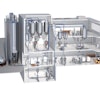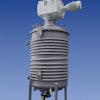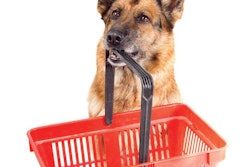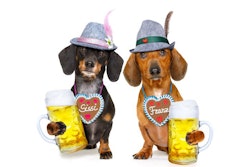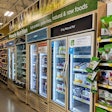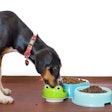
The public health response to the COVID-19 pandemic disrupted dog, cat and other pet food retailing in ways that may continue after the disease has been controlled. Jared Koerten, head of pet care at Euromonitor International, shared three trends reinforced by the pandemic that he believes will influences the pet food industry long term. He spoke in a recorded webinar presented by Euromonitor and Interzoo about the COVID-19 pandemic’s effects on the pet supplies industry.
1. Pet food retail automation
Self-checkout lanes at grocery stores have been around for decades, but now automation expands as businesses look to reduce both contagion and labor costs. At one retailer, NowPet in Israel, the checkout lane disappeared completely, Koerten said. The store recognizes a shopper using sensors and software, then connects the shopper to their profile. Cameras track the shoppers and watches what they take, automatically charging them.
“It’s completely contact-less, employee-free,” he said. “It might be something we're heading to in an era of contact-less retail with the virus. So, we have to think about what does this mean for traditional front end impulse, right?”
Without a checkout, shoppers never stand in line perusing the little bags of treats or toys that dangle above the conveyor belt, he said. In an automated pet food store, impulse purchases would likely suffer. In the example of PetNow, the store is small with little room for special displays, end caps or other merchandising displays.
“If we do move towards more automation, towards more of these automated stores in the future with technology, what would that mean for in store practices?” Koerten said.
2. Purpose-driven trips to pet food retailers
Taking dogs to the pet food store used to be a recreational activity for some pet owners. Along with the fun of taking a pet out, there was social element as pet owners discussed products with each other.
“What happens when trips to pet specialty become less about socialization, spending time with your pet enjoying some time outside of the home and suddenly becomes an in-and-out, purpose-driven trip, without that element of browsing and product discovery?” he said.
That social element was a major driver for pet specialty sales, he said. However, people no longer wish to spend time lingering and browsing in stores. That translates into less time discovering new pet foods, treats and other products.
3. Engaging with consumers online
For many pet owners, even a purposeful mission to the pet specialty store has become too risky. Instead, dog, cat and other pet food shoppers look online for products with home delivery. E-commerce was already growing, but the pandemic has fueled the shift away from brick-and-mortar pet food retailing.
That raises questions about how pet food brands and retailers can engage with consumers online, Koerten said. From live-streaming videos of pet owners playing with their animals to video reviews of products, the internet upends traditional models for brands’ interactions with consumers, but also provides new options for communication.
“What does that look like?” Koerten said. “What does digital engagement for pet food look like, in markets like China or others as more of that market shifts to e commerce?”
E-commerce and other trends reinforced by the pandemic may have long term repercussions for the pet food industry as nations continue to struggle with COVID-19 and its effects.

